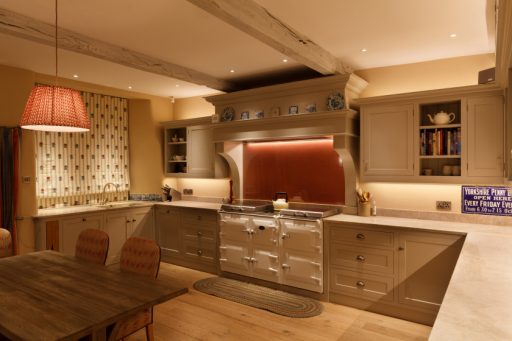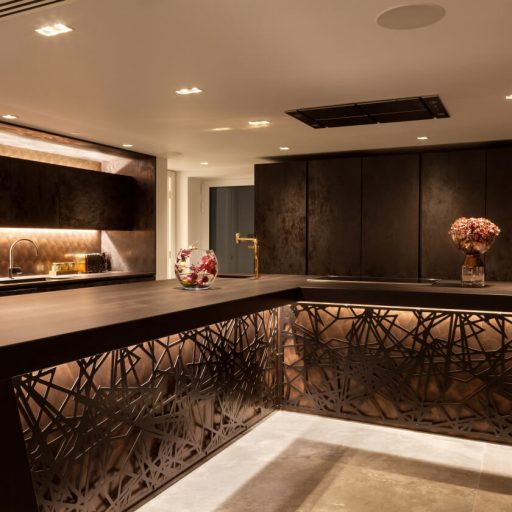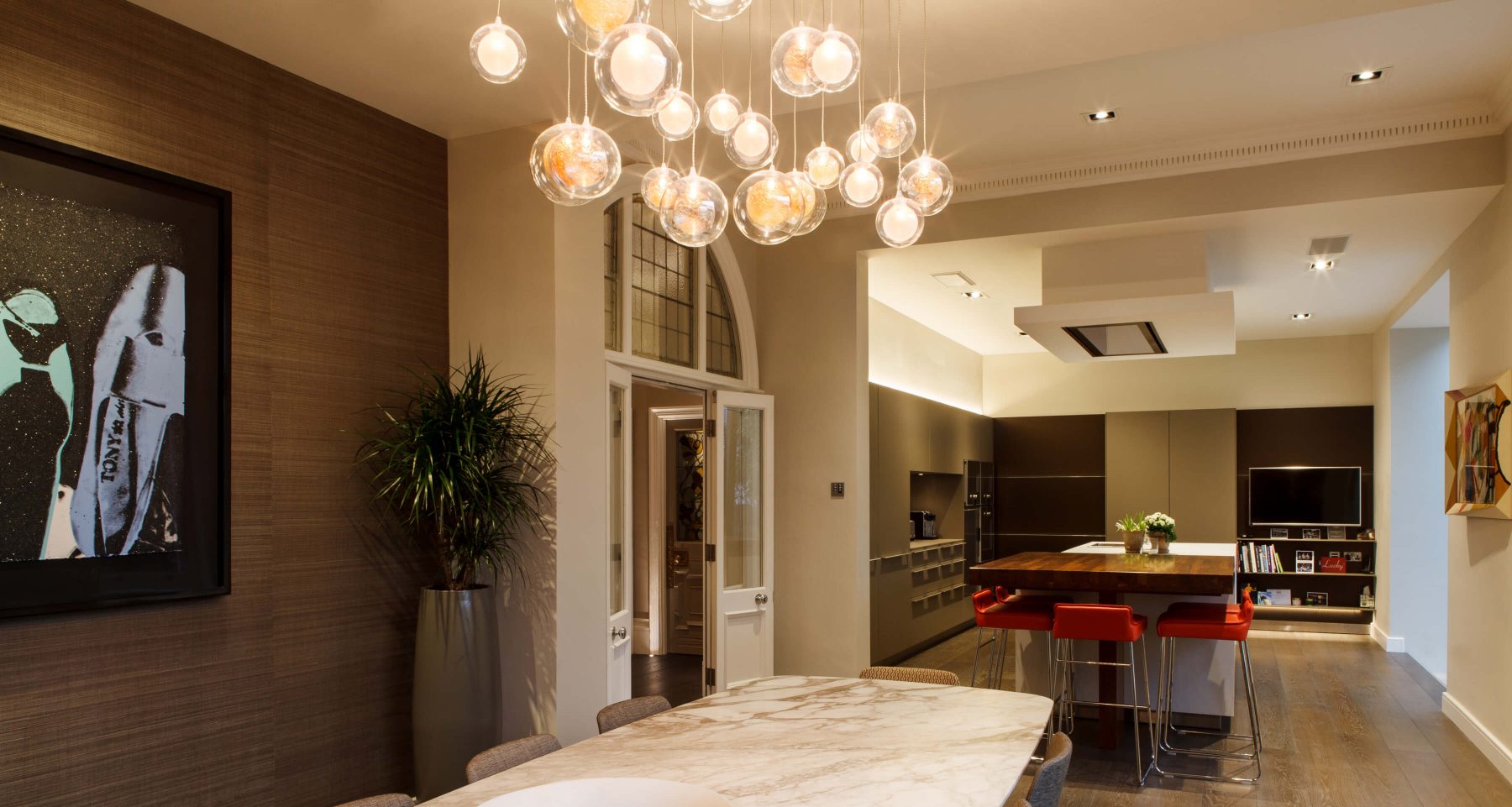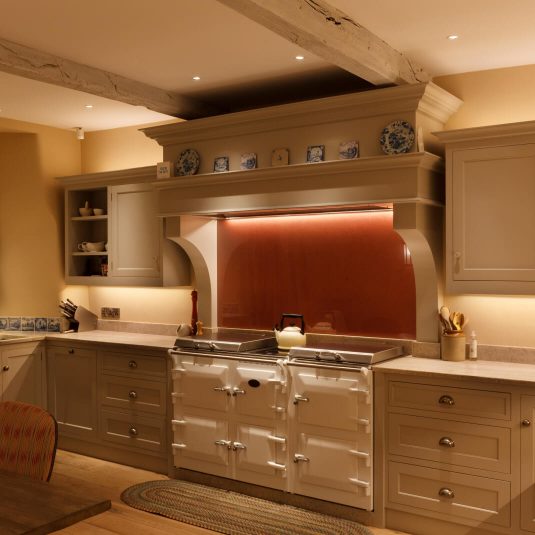
Lighting a stone barn conversion, West Yorkshire
A lovely, cosy stone barn. Lighting is key to the warm, contemporary, slightly industrial feel.
People often spend more on the kitchen than any other room in the house and for many it’s the heart of the home. It’s a high investment area, so getting the lighting right is incredibly important.
There is no one fixed design template for kitchen lighting but there are common challenges to be addressed. There is the need for good functional lighting on the working areas but there is frequently the need to zone the space. Dining, sitting and relaxing, food preparation all warrant different lighting treatments and if you’ve got a beautiful kitchen you probably want to light it beautifully too.
In many homes a kitchen is no longer just a kitchen: it’s also a dining room, breakfast bar, family seating area and indoor-outdoor space. Each of these individual spaces has to work in its own right, but the room has to work as a whole too. Zoning the individual areas with light is key, with circuits that can be separated out. For examples you might want to create intimacy over the dining table whilst not lighting up the washing up.
As with all rooms, it’s helpful to think first about ‘what’s interesting about this space’. This might prompt lighting of artwork, or a lovely stone wall, or wall lights framing an entrance. Uniformity is not important, lighting what you want to look at is.
The next question is even more important for a kitchen: ‘where and what sort of functional lighting is required.’ It’s important to have the right quantity of light, but that doesn’t mean throwing a ceiling-covering grid of downlights at the room. A grid of downlights almost inevitably leads to shadows where you don’t want them, and it can also suck the shape and character out of the room. By working with the kitchen design rather than ignoring it, you can put the light where you want it, eg; by locating fittings over working surfaces as opposed to behind you.
Task lighting is particularly challenging in rooms with limited fixing points, eg; with double height ceilings, glass roofs or very restricted ceiling heights and voids. There are a number of ways around these, for example using suspended track lighting or using the kitchen joinery to create fixing points for the light fittings. Each situation is different but all benefit from early planning.
Kitchens are also often spaces for entertaining and relaxing, so finding the elements of ‘magic’ are key. Exactly what it is will vary, but again really understanding the architecture and the detail of the interiors will open up opportunities.
Creating different moods and focus requires multiple circuits. Doing this in large multi-functional spaces results in even more circuits. Each circuit needs a switch or (ideally) dimmer, which can result in a lot of knobs to twizzle. A lighting control system takes all the hassle and wall clutter out of this by creating ‘scenes’, such as cooking, dining, entertaining.
25 Jan 2016
We do a lot of consumer shows, we write for a number of publications and we meet hundreds of people interested in talking about lighting. Melanie’s just written an article for Houzz that looks at the 10 lighting questions we’re asked most frequently. As ever it’s illustrated…
11 Aug 2013
Kitchens can be challenging spaces to light. In this post we look at the most common kitchen lighting mistakes and how to avoid them. Kitchens need to be highly functional spaces, they’re often multi-functional; used for cooking, dining, entertaining. So while good task lighting is essential we believe that great…






